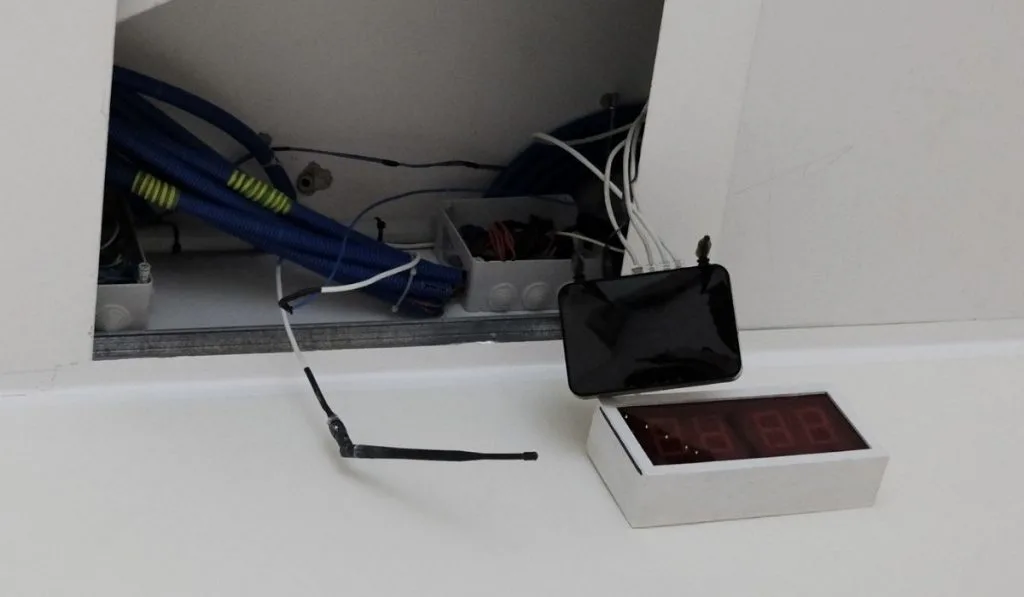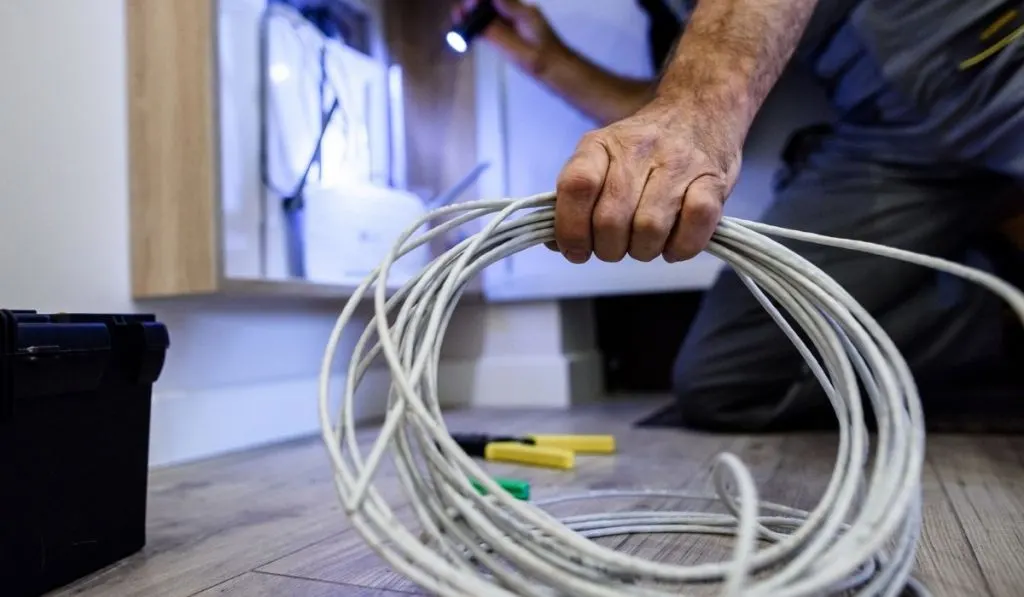When running cable, you may have wondered if you can just run ethernet through your air ducts. These spaces seem to be the perfect candidate to hide wires and connect rooms easily. But, before you start pushing cables, there is a lot to know about your air ducts and types of ethernet cables.
You can run ethernet cable through air ducts, but it may be against local building codes. PTFE or Teflon-coated cable is more resistant to heat and is better for use in air ducts. Ethernet cable with standard or extra shielding will not experience signal issues, but running it through the wall instead is typically worth the extra time.
While it is possible to run cable through your air ducts, most HVAC, electrical, and IT professionals may advise against it for a couple of reasons. There are also legal questions that need to be addressed related to building codes, lease agreements, and insurance policies. Even for a residential space, you can run into various legal conundrums.
Complications With Running Ethernet Through Air Ducts

While it may seem like a great idea at first, there are all sorts of complications that can come from running cables through your ducts. These problems are mostly related to health and safety, but there are legal ramifications as well. Note: we are in no way offering legal advice; our only aim is to educate. Here are just a few of the many complications you could run into:
- Hot environment – Heat is the enemy of electronics, and ethernet is no exception. The hot air can cause damage to your cables.
- Cables as a fire hazard – Most ethernet cables are sheathed in PVC. This material is not only highly flammable but also produces dense black smoke riddled with hydrochloric acid which is very poisonous and toxic.
- Building code violations – Depending on where you live, it could be against building codes to run any type of cables in your air ducts. Always do your research on your area’s building codes before attempting any home renovation/project.
- Insurance issues – Some companies see running cable this way as a risk, and sometimes that can be a reason to deny a claim. This is especially true if dealing with the aftermath of a fire.
- Lease issues – If you are on a lease, it may violate the agreement. Keep this in mind and consult your lease before making any alterations.
These complications can arise when you are running cables without an understanding of the potential problems. Some issues, like violating building codes, may not be able to be remedied. This is because some areas may not allow you to run cables through your ducts at all.
But others, like fire-prone cables, can be addressed with proper materials and an understanding of how to make everything work properly. So, if you have cleared it with your local building codes and other people, (like your landlord if you are renting), what is the best way to reduce the risk?
Reducing the Hazard from Ethernet Cable Run Through an Air Duct
First, you need to source the correct type of cable (more on cable types including flat and round in our guide). As previously mentioned, PVC is not a suitable material for hot environments. It burns easily and can produce toxic fumes. So, you may be wondering if there is a preferred cable to use. Well, there is a type made specifically for this purpose. It is called Plenum Cable.
A plenum cable like this one (on Amazon) is rated to be used in Plenum spaces. But what are Plenum spaces? It has to do with the area in a commercial setting, either above the false ceiling or under a raised floor. These spaces are used for both heating and cooling ducts as well as running communication cables.
Because of the inherent fire hazard surrounding bundled PVC cables, these spaces require Plenum-rated cables. Plenum-rated cables are made from treated low-smoke PVC or FEP polymer, they hinder the progression of flames, and they don’t release harmful smoke.
Furthermore, you may want to source PTFE, or Teflon coated cables. This is a type of Plenum cable that is better suited for heat-resistance. Additionally, you need to be aware of which ducts you are running cable in.
Your HVAC system has both return and supply ducts. The former provides air to your system, and the latter uses the ducts to push air into a room. In a perfect situation, you would only use your return ducts to run the cable as they aren’t as harsh as an environment.
Cleaning Your Ducts After Cable Installation

One of the best ways to maintain your HVAC system is to keep a regular cleaning schedule. This not only pertains to filters but duct cleaning too. This is usually taken care of by an HVAC professional periodically. The problem arises with the type of tool used in these cleanings.
It is essentially a giant scrubber that rotates to knock off the dust inside the duct. As you can imagine, this will wreak havoc on your cables. To help prevent this, you can do a number of things including informing your technician, being strategic with cable placement and management, and also by limiting the number of cables running through a duct.
Does Running Ethernet Through an Air Duct Affect the Signal?
With all that extra material to move through, you may assume that this type of cable pull will cause interference issues. In addition to worrying about running ethernet cable alongside electrical cable, you might also be curious about whether dealing with cold and hot temperatures could affect your signal.
The reality is that as long as you are using a quality cable, there shouldn’t be any issues. For example, an appropriately rated Plenum cable will withstand weather extremes far more dramatically than your HVAC ducts. There are commercial cable situations that put these ratings through truly excessive heat and frigid cold. Your home or business won’t ever climb to those extremes.
In contrast, if you were to use a regular ethernet cable with only a PVC sheathing, you could experience a few things like the melting of plastic outer sheathing and cable housings; heat cycling wearing down the cables inner wired pairs, and also brittle and degrading sheathing over time.
But, if you are using properly rated cables, you shouldn’t experience any interference due to placement. Fortunately, shielded Plenum cable is usually labeled as such and should be easy to source. This cable (on Amazon) would make a great choice to prevent any type of interference. If you are worried about interference, there are some steps you can follow:
- Source shielded wiring, keep in mind not all Plenum cable is shielded.
- Place your cables away from other electrical wiring.
- Make sure there are no other devices (motors, electronics, etc.) that may shed electromagnetic energy near the cables.
Alternatives to Running Cable Through Ductwork
If you opt not to run cable through your ductwork, there are still some options for you. Think of your main reasons for wanting to run through your air ducts. It could be the clean aesthetic of keeping wires tucked away. It could also be the easy use of the already-made channels for pulling your wires. Here are some conventional and some creative ways to run your wire.
- Through the walls – This more traditional route will undoubtedly take more time and work but will result in a clean installation. When done right, this method will pose none of the fire risks or code violations of using air ducts.
- Using creative cable management – Using cable stays (on Amazon) and cable channels (on Amazon) can give you a concealed look without running any wires through walls.
- Taking advantage of an existing coaxial system – If you have cable internet and coaxial connection throughout the home, you can use them as an internet signal with adapters like this Actiontec MOCA Adapter (on Amazon).
Conclusion
While you can run ethernet cable through ductwork, you need to make sure you use the right cable. Not only that, but you must also abide by state and local building guidelines and those set by your insurance company and possibly your lease agreement. Additionally, being aware of the fire risks when dealing with an HVAC system is recommended.
